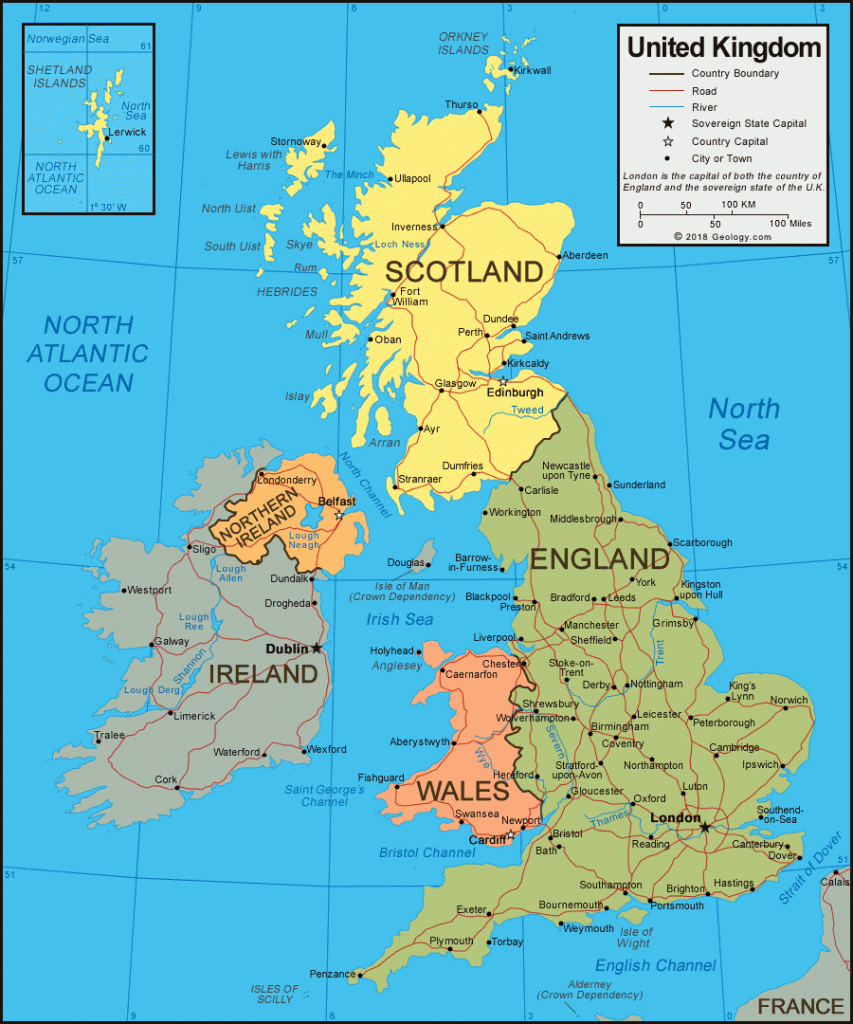The British Dubbing Loophole of 1988

Pictured above is a map of the United Kingdom and its neighbor, Ireland. If you’re not familiar with the area’s history, it may seem a bit strange. There are two major islands pictured above. To the east is Great Britain, consisting of Scotland, Wales, and England. To the west is the island of Ireland, consisting of the Republic of Ireland (in grey) and Norther Ireland (in orange). All three parts of Great Britain are part of the United Kingdom, as is Northern Ireland. But the Republic of Ireland is a nation unto its own.
For decades starting in the late 1960s and running through 1998, the fact that Northern Ireland isn’t, politically, part of Ireland, caused a lot of headache and violence. Irish nationalists in Northern Ireland protested against being subjects of the British Crown, sometimes turning to terrorism in Northern Ireland and into England. That period, known as the Northern Ireland conflict globally and “The Troubles” (which Wikipedia summarizes here) more locally became an increasingly important part of British politics over the period. Because Northern Irish nationalists were British subjects — even if they didn’t want to be — they had the right to vote in British elections, and often had representation in Parliament. Even when The Troubles turned particularly violent, political leaders among the Norther Ireland faithful were on television, making the case for their side.
But sometimes, they couldn’t speak for themselves — literally. The law wouldn’t allow them to. And that led to some weird television.
On August 20, 1988, members of the Provisional Irish Republican Army (commonly called the “IRA”) — a paramilitary organization that took up arms against the British — bombed a bus carrying British soldiers near the Northern Ireland town of Ballygawley. The attack claimed the lives of eight soldiers and injured 28 more. In response, about two months later, the British government voted to censor Irish republican leaders who wanted to appear on British-run TV and radio. On October 19, Home Secretary Douglas Hurd exercised authority under the broadcast media laws of the time, “prohibiting the broadcast of direct statements by representatives or supporters of eleven Irish political and military organizations,” in the words of Wikipedia’s editors. There was an exception carved out for the period right before elections, but outside of that period, you’d never hear their voices over the airways.
Journalists throughout the nation objected to this, calling it censorship, but to no avail. Even Gerry Adams, then the Member of Parliament from Belfast West in Northern Ireland, couldn’t speak on TV or radio — as the head of Irish nationalist party Sinn Féin at the time, he was caught by the censorship law.
But just because he couldn’t speak on TV or radio didn’t mean he couldn’t appear on TV. The law prohibited direct statements — not indirect ones. Radio stations could have newscasters read the statements without issue. And when it came to TV, the press got creative. Here’s how the Guardian summarized the solution:
The voices of the sanctioned speakers were barred, but the words they spoke were not, resulting in the unique workaround for which the ban is now chiefly remembered: six years in which anyone claiming to speak for Sinn Féin would have their voices dubbed by actors. First tested in a Channel 4 Dispatches documentary in which Stephen Rea voiced Gerry Adams, the process was soon applied across the board, leading to the ubiquitous process of dozens of elected representatives and spokespeople having their words dubbed from English to English on all broadcast platforms.
For voice actors, this was a boon — most news organizations had them at the ready, in case Adams or another Irish republican leader had something to share. TV news would still have people like Adams or the like on their shows; they’d just introduce him with a disclaimer explaining that the voice viewers were hearing wasn’t the voice of the person they saw on the screen. (Here’s an example.)
Other TV shows made fun of the ridiculous application of the law. For example, in 1994, satirical news show “The Day Today” ran a segment where a Sinn Féin member spoke with a reporter about a bombing, but as the government wanted to discredit the Irish nationalist organization, the speaker needed to suck down helium while speaking, turning his voice into something akin to Mickey Mouse. (You can watch that here.) The ban, if anything, gave more prominence to the censored voices than they would have received otherwise.
The political will to close the loophole was lacking, and the voiceover trick lasted for as long as the ban stayed in effect. The government ultimately ended the broadcast restrictions on September 16, 1994, a few weeks after the IRA agreed to a ceasefire.
Bonus fact: The 12th episode of the third season of Star Trek: The Next Generation debuted on January 29, 1990, but if you were living in the UK or Ireland at the time, you wouldn’t have gotten a chance to watch it right away. During the episode, Commander Data makes a reference “the Irish unification of 2024,” a fictional event that ended The Troubles in the futuristic Star Trek universe. Data used that unification as an example of violence — The Troubles, in this case — achieving the intended political outcome. As the BBC would later note, “originally shown in the US in 1990, there was so much concern over the exchange that the episode was not broadcast on the BBC or Irish public broadcaster RTÉ.” In 1992, broadcaster Sky aired the episode, but edited out the line; it wasn’t until 2007 — will after The Troubles ended (1998) that an unedited episode appeared on the BBC.
From the Archives: The British Ban on Clapping: When BBC radio banned a song about Texas.
